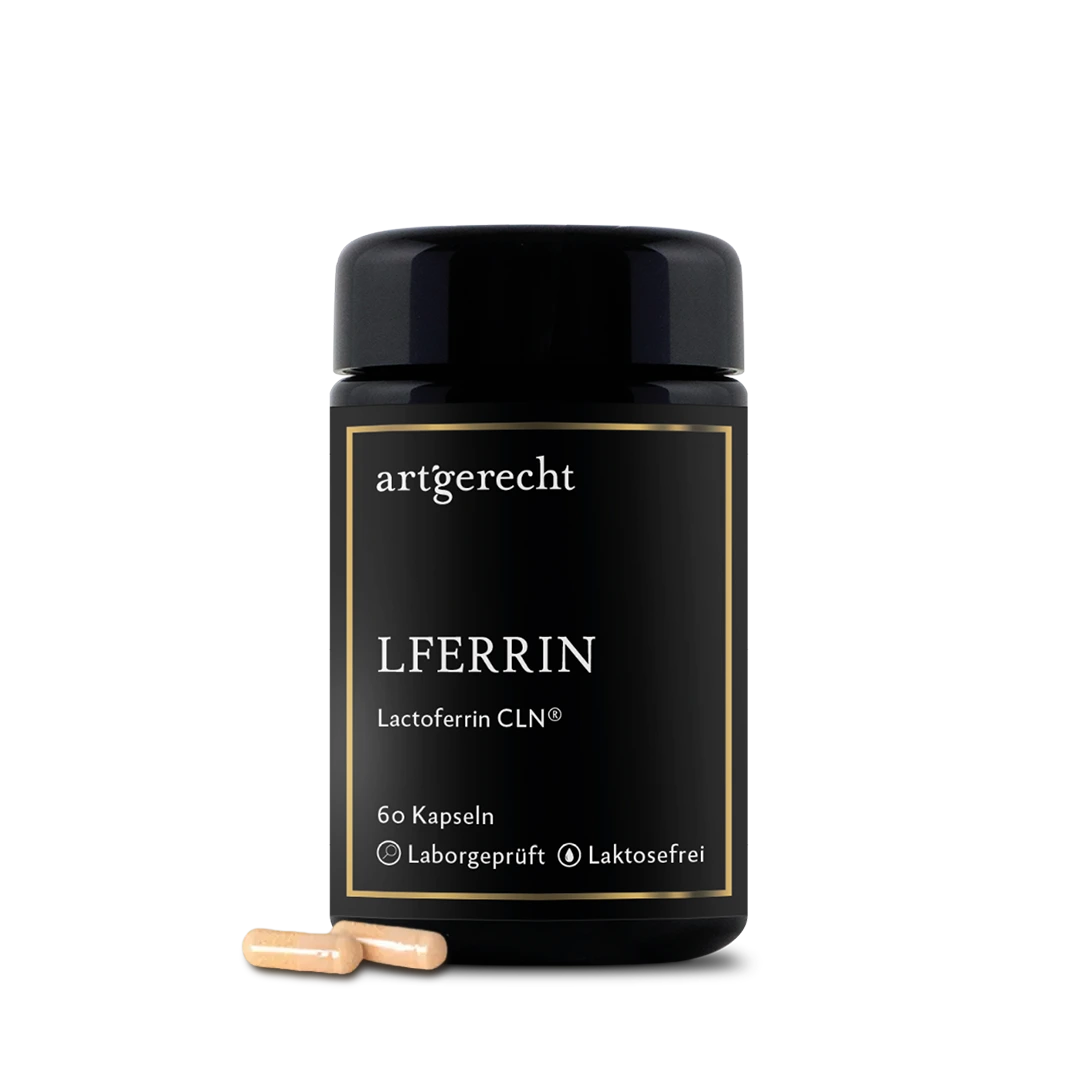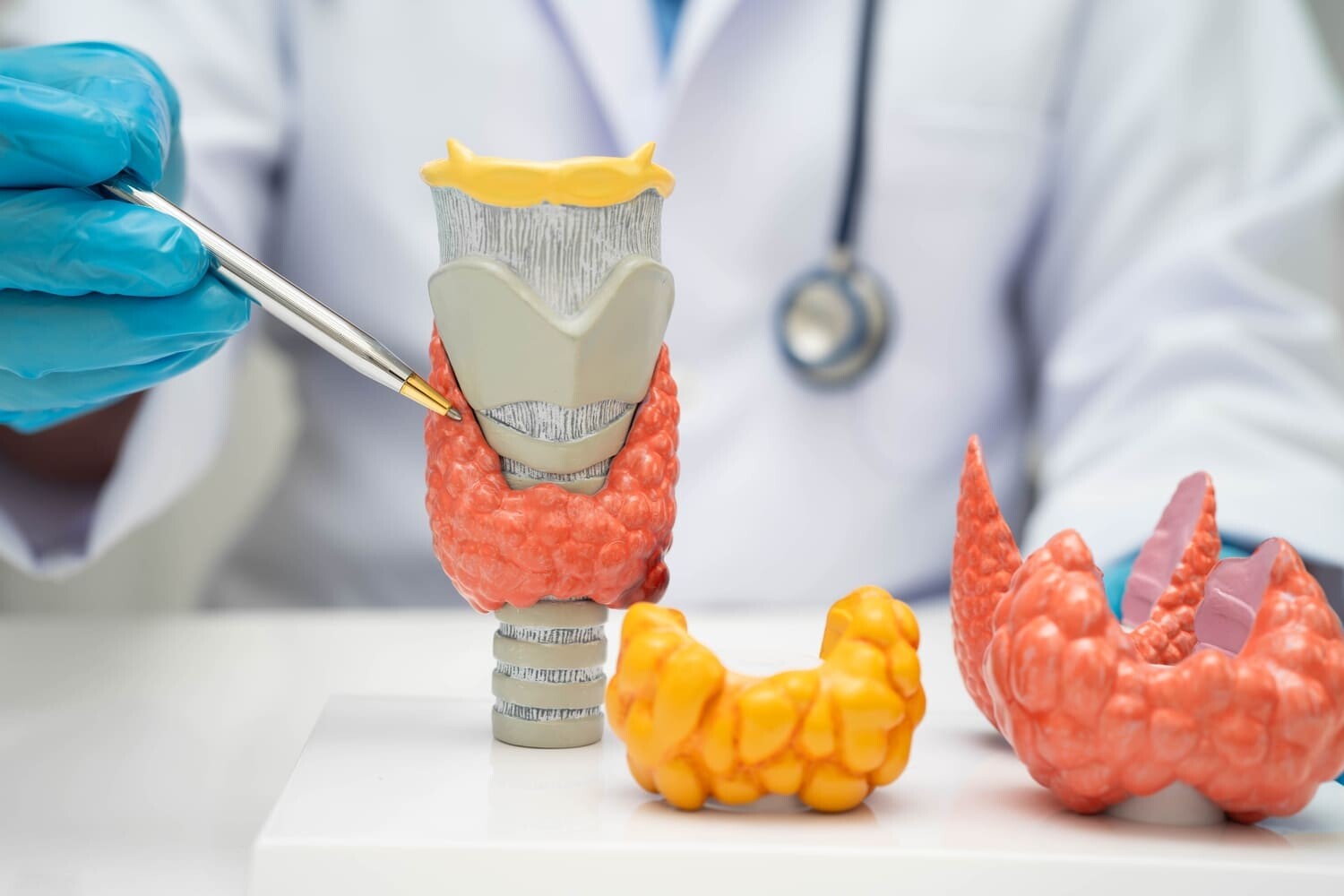Use of lactoferrin in gynecology
Today, it is well documented that the human microbiome plays a major role in many diseases, both in the development of the diseases and in their prevention or cure[1,2].
The microbiome comprises the entirety of microorganisms that exist in and on the human body and, together with human cells, form a kind of superorganism. We have already described this system in another article (The human superorganism).
The vaginal microbiome
Some aspects of this superorganism, however, receive more attention than others, a fact that is also due to their physical size. Many people are now aware that a healthy intestinal ecosystem is of great importance for health. Other areas are discussed much less frequently, such as the microbiome of the female sexual organs, the so-called vaginoma.
Because here too there is a complex microbiome with an important function for health and the defense against potential pathogens. This Öcosystem is dominated by lactobacilli in healthy individuals. It varies depending on hormonal status and differs pre- and postmenopausally [3,4]. The lactobacilli produce lactic acid, which lowers the pH value. In this way, they support the innate immune system and actively combat harmful bacteria [5].
Changes or disturbances in the vaginal flora play a significant role in the development of diseases such as bacterial vaginosis, sexually transmitted diseases and urinary tract infections [6-8].
Bacterial vaginosis
One of the most common diseases in the vaginal area is bacterial vaginosis. Antibiotics are often used for this diagnosis, a measure that does not, however, lead to long-term healing [5].
Studies that investigated the administration of lactoferrin for bacterial vaginosis have, however, been successful.
A study from 2017 was able to show that lactoferrin was able to reduce the number of pathogenic germs and simultaneously increase the concentration of lactobacilli. These measurable differences occurred after just 2 weeks of vaginal treatment with 200 mg lactoferrin.
Pregnancy progression and prematurity
Vaginoma has even more profound effects, however, as it is also closely linked to fertility and the course of pregnancies.
It is known that infections caused by pathogenic germs can play a role in the development of premature birth. The presence of these pathogenic germs releases various pro-inflammatory (inflammatory) messengers such as interleukin-6, which ultimately lead to premature rupture of the membranes or premature birth [9].
Giunta et al. already investigated the possibilities of intervention with lactoferrin in women who showed an increased risk of premature birth caused by a cervical infection. Oral administration of lactoferrin 100 mg twice daily reduced the amount of pro-inflammatory messengers (interleukin-6) in vaginal secretions and was able to normalize the vaginal microbiome and reduce the risk of premature birth.
A smaller study involving six women with a history of pregnancy loss, premature births and bacterial vaginosis also showed a significant improvement in the vaginal microbiome following the administration of lactoferrin [10]. The authors refer to similar results in animal experiments [11] and are also optimistic that lactoferrin could help to reduce the risk of premature births due to infections.Independent of the investigation of the microbiome, such an effect of lactoferrin has already been demonstrated in earlier human studies [12].
The use of lactoferrin also had a positive effect on the course of chlamydia infection, one of the most common sexually transmitted diseases worldwide. Acute infection with chlamydia often requires long-term administration of antibiotics, which in turn favors the development of resistance to them. Her it has been shown that lactoferrin can be successful against the pathogen Chlamydia trachomatis when administered intravaginally [13].
Dysbiotic fertility disorders
Vaginal dysbiosis, i.e. an imbalance in the vaginal microbiome, can also be associated with reduced pregnancy rates. This was investigated in a study by Bernaubeu et al. in a group of assisted reproductions [14].
In one study, it was possible to predict whether artificial insemination (IVF) would be successful or not after investigating microbial diversity in the form of complex gene sequencing vs. a simpler PCR (polymerase chain reaction) [15].Thanks to new analysis methods, it is now possible to intervene much more specifically. A pilot study is currently investigating a triple therapy of antibiotics, probiotics and lactoferrin for endometrial dysbiosis of the vaginal microbiome, with the conclusion that restoring the microbiome can also be beneficial in terms of fertility.Conclusion
In summary, it can be said that a healthy vaginoma is essential to prevent colonization and its consequences from developing in the first place.
More attention from research, the use of new technologies and therapeutic approaches could open the door to a completely new range of treatments.
Lactoferrin lives up to its role as a multifunctional protein and can be a key component of such innovative concepts.
Sources
1 Carding S, Verbeke K, Vipond DT, Corfe BM, Owen LJ. Dysbiosis of the gut microbiota in disease. Microb Ecol Health Dis. 2015;26:26191.
2 Sekirov I, Russell SL, Antunes LC, Finlay BB. Gut microbiota in health and disease. Physiol Rev. 2010 Jul;90(3):859-904.
3 Forsum U, Holst E, Larsson PG, Vasquez A, Jakobsson T, Mattsby-Baltzer I. Bacterial vaginosis–a microbiological and immunological enigma. APMIS : acta pathologica, microbiologica, et immunologica Scandinavica 2005; 113: 81–90.
4 Cribby S, Taylor M, Reid G. Vaginal microbiota and the use of probiotics. Interdisciplinary perspectives on infectious diseases 2008; 2008: 256490.
5 Pino A, Giunta G, Randazzo CL, Caruso S, Caggia C, Cianci A. Bacterial biota of women with bacterial vaginosis treated with lactoferrin: an open prospective randomized trial. Microbial ecology in health and disease 2017; 28: 1357417.
.6 Ma B, Forney LJ, Ravel J. Vaginal microbiome: rethinking health and disease. Annual review of microbiology 2012; 66: 371–389.
7 Hyman RW, Fukushima M, Jiang H, Fung E, Rand L, Johnson B, Vo KC, Caughey AB, Hilton JF, Davis RW, Giudice LC. Diversity of the vaginal microbiome correlates with preterm birth. Reproductive sciences (Thousand Oaks, Calif.) 2014; 21: 32–40.
8 Goldenberg RL, Hauth JC, Andrews WW. Intrauterine infection and preterm delivery. The New England journal of medicine 2000; 342: 1500–1507.
9 Giunta G, Giuffrida L, Mangano K, Fagone P, Cianci A. Influence of lactoferrin in preventing preterm delivery: a pilot study. Molecular medicine reports 2012; 5: 162–166.
10 Otsuki K, Imai N. Effects of lactoferrin in 6 patients with refractory bacterial vaginosis. Biochemistry and cell biology = Biochimie et biologie cellulaire 2017; 95: 31–33.
11 Yakuwa K, Otsuki K, Nakayama K, Hasegawa A, Sawada M, Mitsukawa K, Chiba H, Nagatsuka M, Okai T. Recombinant human lactoferrin has a potential to suppresses uterine cervical ripening in preterm delivery in animal model. Archives of gynecology and obstetrics 2007; 275: 331–334.
.12 Paesano R, Pietropaoli M, Berlutti F, Valenti P. Bovine lactoferrin in preventing preterm delivery associated with sterile inflammation. Biochemistry and cell biology = Biochimie et biologie cellulaire 2012; 90: 468–475.
13 Sessa R, Di Pietro M, Filardo S, Bressan A, Rosa L, Cutone A, Frioni A, Berlutti F, Paesano R, Valenti P. Effect of bovine lactoferrin on Chlamydia trachomatis infection and inflammation. Biochemistry and cell biology = Biochimie et biologie cellulaire 2017; 95: 34–40.
14 Bernabeu A, Lledo B, Díaz MC, Lozano FM, Ruiz V, Fuentes A, Lopez-Pineda A, Moliner B, Castillo JC, Ortiz JA, Ten J, Llacer J, Carratala-Munuera C, Orozco-Beltran D, Quesada JA, Bernabeu R. Effect of the vaginal microbiome on the pregnancy rate in women receiving assisted reproductive treatment. Journal of assisted reproduction and genetics 2019; 36: 2111–2119.
15 Haahr T, Humaidan P, Elbaek HO, Alsbjerg B, Laursen RJ, Rygaard K, Johannesen TB, Andersen PS, Ng KL, Jensen JS. Vaginal Microbiota and In Vitro Fertilization Outcomes: Development of a Simple Diagnostic Tool to Predict Patients at Risk of a Poor Reproductive Outcome. The Journal of infectious diseases 2019; 219: 1809–1817.
16 Kyono K, Hashimoto T, Kikuchi S, Nagai Y, Sakuraba Y. A pilot study and case reports on endometrial microbiota and pregnancy outcome: An analysis using 16S rRNA gene sequencing among IVF patients, and trial therapeutic intervention for dysbiotic endometrium. Reproductive medicine and biology 2019; 18: 72–82.












